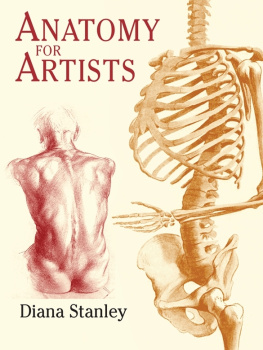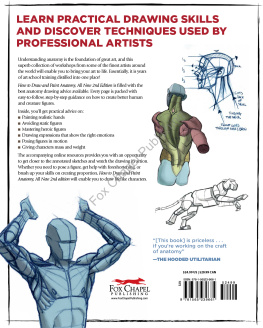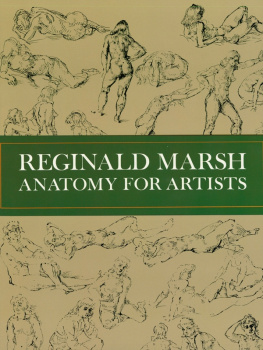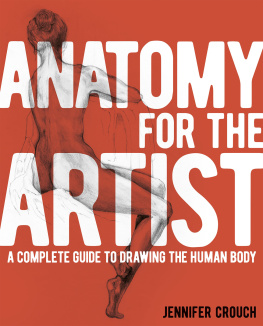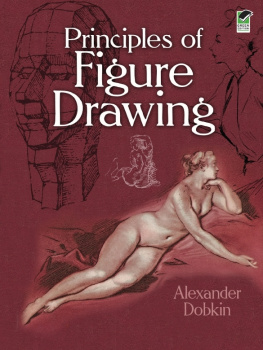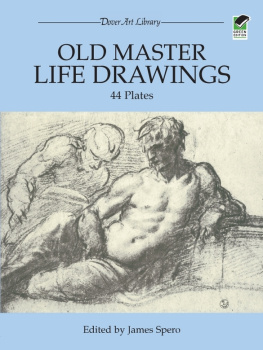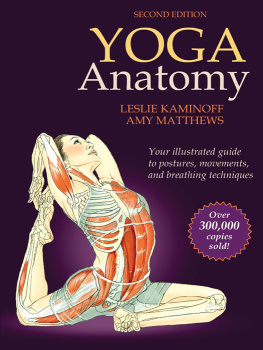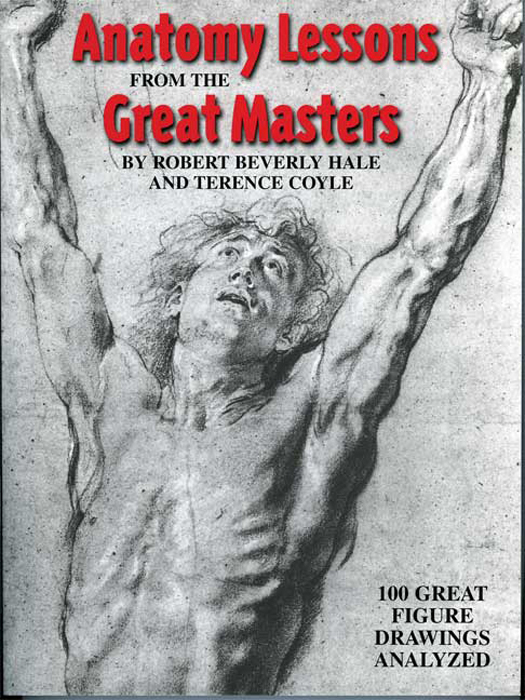Anatomy Lessons
FROM THE
Great Masters
BY ROBERT BEVERLY HALE AND TERENCE COYLE
WATSON-GUPTILL PUBLICATIONS/NEW YORK
Paperback edition 2000
Copyright 1977 by Watson-Guptill Publications
First published in 1971 in the United States and Canada
by Watson-Guptill Publications,
an imprint of the Crown Publishing Group,
a division of Random House, Inc., New York
www.crownpublishing.com
www.watsonguptill.com
Library of Congress Cataloging in Publication Data
Hale, Robert Beverly
Anatomy lessons from the great masters.
Bibliography: p.
Includes index.
1. Anatomy, Artistic. I. Coyle, Terence,
joint author. II. Title.
NC760.H27 1977 743.4 77-12810
ISBN-13: 978-0-8230-0281-8
ISBN: 0-8230-0281-0
eBook ISBN: 978-0-307-78644-9
Trade Paperback ISBN: 978-0-8230-0281-8
All rights reserved.
Cover design by Bob Fillie, Graphiti Design, Inc.
Edited by Bonnie Silverstein
Designed by Bob Fillie
v3.1
Acknowledgments
We wish to thank all the people and institutions who aided us in the survey and gathering of the master prints for this book. Special thanks are due to Jacob Bean, Curator of Drawings, and to the staff of the Department of Drawings of the Metropolitan Museum of Art.
We are most thankful to our editor, Bonnie Silverstein, for her patience and skill and, above all, we gratefully acknowledge the sound advice and guidance from the beginning of this book to its completion of Don Holden, Editorial Director of Watson-Guptill.
CONTENTS
INTRODUCTION
When I wrote Drawing Lessons from the Great Masters , I tried to explain to laymen or beginners (after all, they are the same thing) that the creation of a first-class drawing requires a wealth of information, as well as much prior practice and application. I pointed out that the techniques necessary were no mystery, since they had all been worked out through the yearsat times by some of the greatest minds in history. I tried to show that a good drawing consists of an understanding of techniques and conventions, and that these techniques and conventions were all interdependent, one upon the other. Furthermore, I stated that these elements were invariably present in the works of all first-rate artists, though not too apparent to the laymans eye, for it evidently takes much practice in drawing before these qualities can be readily recognized. Finally, I suggested that after the student had had a certain amount of experience, the drawings of the masters made by far the best teachers, and would graciously provide answers to all problemsassuming, of course, that the student had the creative curiosity to formulate the questions.
However, there was not enough space in Drawing Lessons from the Great Masters to set down all the necessary anatomical material. So I was delighted when Terence Coyle, a former student of mine and a fellow instructor at the Art Students League, suggested that he would like to write a companion volume, Anatomy Lessons from the Great Masters , which would explore in full detail the subject of artistic anatomy as conceived and used by the masters. I was convinced that such a book would be of great help to students.
A cursory glance at the drawings herein should at once reveal that each artist had absorbed the technical details of anatomy so well that these details could be set down instinctively. This has to be so, for if an artist has to occupy his mind with the task of clumsily grouping the elemental facts of anatomy as he draws, there can be little room left for really important matterssuch as the spirit of the drawing and the artists expressive intent.
The beginner must fully understand that there is much, much more to drawing than just a full knowledge of anatomy. Otherwise, any medical man could create a first-rate figure drawing, which he cannot. The reason he cannot is that he is not aware that his splendid knowledge of anatomy must be related to all the other conventions and elements of drawing. In fact, the anatomy must frequently be subordinated to these other factors. If you wish to be a fully trained artist, all these conventions and elements must be so fully learned that, like anatomy, they may be instinctively expressed.
And what are all these mysterious conventions and elements? That is what my previous book, Drawing Lessons from the Great Masters , is all about. The great master drawings and anatomical facts so skillfully compiled by Terence Coylein Anatomy Lessons from the Great Masters are meant to complement the analysis of drawing principles in the earlier volume. I hope you will find time to read them both.
R OBERT B EVERLY H ALE
New York, May 1977
PREFACE
For many years, I was privileged to attend and assist at Robert Beverly Hales famous lectures at the Art Students League of New York. Everyone who has been present at these lectures has felt the spell of this unforgettable man, who is surely Americas greatest teacher of figure drawing and artistic anatomy. Attending a Hale lecture, one shares the speakers rich intellectual experience. Hales colorful analogies relate the act of drawing to biology, anthropology, physics, architecture, history, and always to everyday life. He awakens the students awareness and scientific curiosityteaches him to look beyond mere anatomical facts. Under Hales guidance, the study of the human figure becomes a path to the understanding and appreciation of natures fundamental order.
Hale has long felt the need for an anatomical counterpart to his earlier book, Drawing Lessons from the Great Masters , but his busy life has always been filled with other projects. Over the years, I have kept detailed notes on his anatomical lectures and I finally suggested that I assemble these notesappended to 100 master drawingsin a new book to be called Anatomy Lessons from the Great Masters . Hale gave his blessing to the project and the present book is the result.
However, when I insisted that Hales name receive top billing on the jacket and title page of Anatomy Lessons from the Great Masters , he objected, But I didnt really write the bookyou did! Surely it is obvious that there would be no book at all without Halewithout his years of inspired teaching and his vast knowledge, to which my lecture notes can scarcely do justice. And so Robert Beverly Hales name stands first, where it truly belongs.
The purpose of this book is to introduce art students to the practical applications of artistic anatomy in the figure drawings of the great masters. Like Drawing Lessons from the Great Masters , this new volume reproduces 100 great figure drawings. Each drawing is then analyzed to show how that particular master dealt with a specific area of the body. Thus, the student may see at once how the masters used anatomy to solve their figure drawing problems. An analytical caption is placed on the page opposite each master drawing. On that same caption page is a diagram of the drawing (or a significant part of it) so there is no time-consuming search for page references and diagrams in remote areas of the book. The master drawings are carefully selected to show how the anatomical area under discussion is treated in a variety of styles and techniques. As such, the book is essentially a self-teacher.
The book is divided into eight chapters generally based on the order of Hales lectures. At the end of the book, for further reference, we have used an appropriate selection of fine plates drawn by Dr. Paul Richer in Artistic Anatomy (translated and edited by Robert Beverly Hale). The anatomical terms used in the text are those found in Grays Anatomy and in Richers book and are in common use today. When an unfamiliar anatomical name is introduced, the familiar name is given first and then followed by the technical name. Thereafter, the technical name is used throughout the text.


